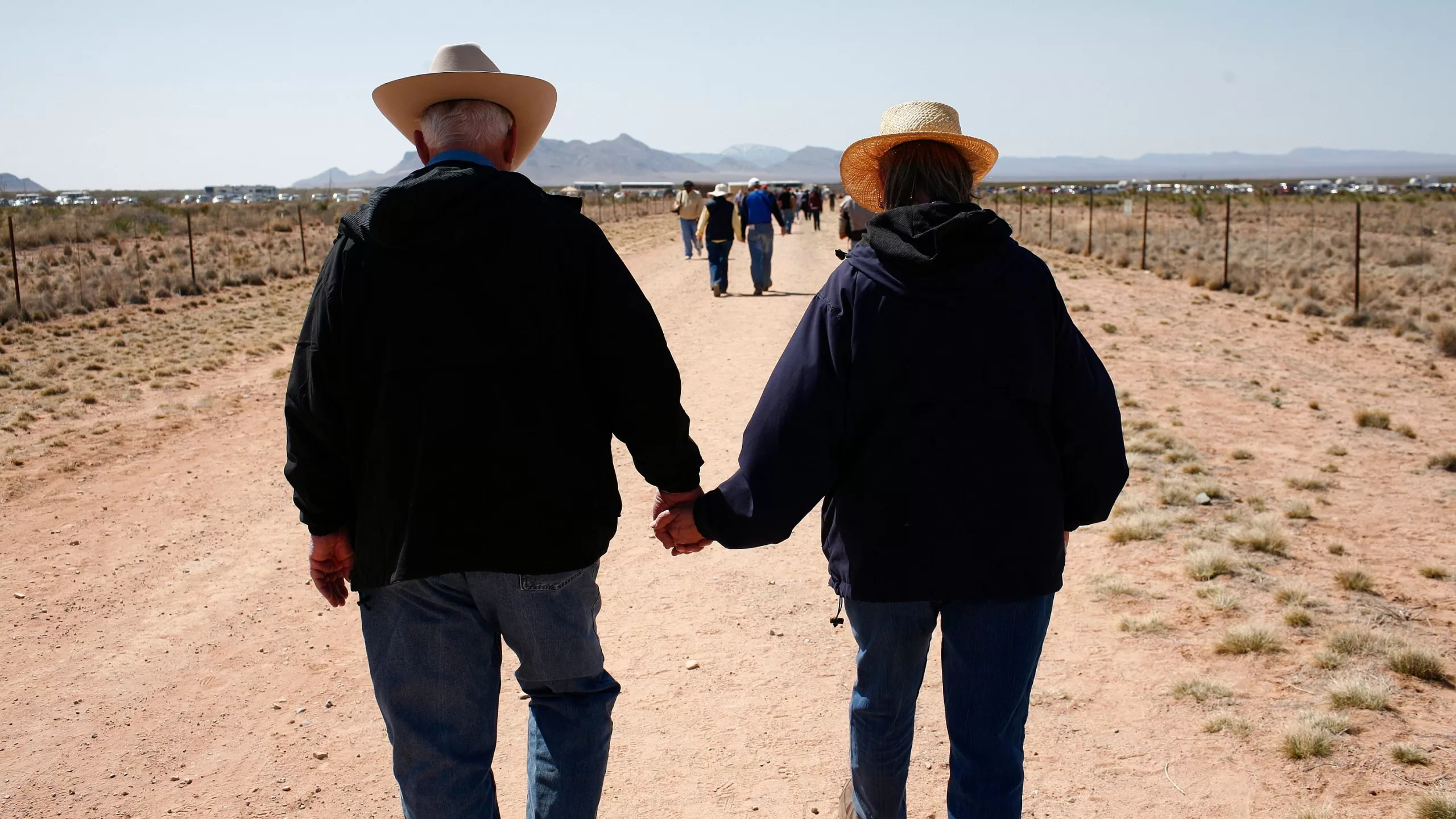In a cinema in Santa Fe, in the state of New Mexico, hundreds of people pack the room where it is projected. one of the most anticipated films of the season, ‘Oppenheimer’. In one of the seats, Tina Cordova cannot hold back the tears. But she doesn’t cry because of the emotion of the tape, but because of the feeling of rage and impotence that the latest work by director Christopher Nolan has left her.
She is not just another spectator. Cordova is a woman born and raised in Tularosa, the closest inhabited town to where the world’s first nuclear bomb was tested. and whose story has been immortalized in ‘Oppenheimer’. Or rather, only a part of that story. His father was four years old when the events occurred on July 16, 1945. Now she runs the Tularosa Basin Downwinders Consortium, a group whose mission is to get recognition for the damage caused to the families who lived around Trinity when that first nuclear device was detonated, and who have never received any compensation for the medical problems they still suffer today.
The movie ‘Oppenheimer’ recreates over three hours the history of the Manhattan Project from the point of view of the scientist who led the mammoth challenge of creating and testing the first atomic bomb. But the film tiptoes by and practically does not mention the inhabitants of New Mexico who lived near the scene, and who became the first humans to ‘receive’ the effects of the most devastating weapon ever launched.
That is the reason for Cordova’s tears, which in an opinion column published in the New York Timess expresses his enormous disappointment. “Our community was looking forward to the release of “Oppenheimer” and some recognition of what we have endured for the past 78 years. When I saw the movie at a sold-out screening in Santa Fe, I knew it wasn’t going to be like that. The three-hour film tells only part of the story of the Manhattan Project. It doesn’t explore the consequences of deciding to test the bomb in a place where my family and many others had lived for generations,” Cordova explains ruefully.
“I can’t help feeling that retelling this story, as it is, is a missed opportunity. A new generation of Americans is learning about J. Robert Oppenheimer and the Manhattan Project and, like their parents, You won’t hear much about how American leaders knowingly risked and harmed the health of their fellow citizens in the name of war. My community and I are being left out of the narrative again,” denounces the activist.
The place of the facts
The place where the events occurred is in southern New Mexico. The official account speaks of a desolate and uninhabited expanse of land. But according to Cordova, more than 13,000 people lived within a 50-mile radius. “They were not warned before or after the test,” says the co-founder of the Tularosa Downwinders Consortium. “Many witnesses thought they were experiencing the end of the world. They got down on their knees and prayed.” Days later, the ash contaminated with plutonium fell from the sky: on the houses, the crops, the water…
All this has had consequences “devastating for health”. A 2010 study conducted by the Centers for Disease Control and Prevention (CDC) of the United States, determined that radiation levels near the nearest homes reached “almost 10,000 times what is currently allowed in public areas.” Cordova says the organization she co-founded “has documented many cases of families in New Mexico with four and five generations of cancer since the bomb went off. My own family is typical: I am the fourth generation in my family to have had cancer since 1945. My 23-year-old niece was just diagnosed with thyroid cancer.”
Why haven’t they been compensated?
Despite the data, neither Cordova’s family nor the hundreds of families that lived in the area have been compensated by the US government. And this despite the law passed in 1990, known as RECA (Radiation Exposure Compensation Act), which provides financial support to ‘downwindwers’ (people who lived upwind of nuclear test fields). The law recognizes those affected in Nevada, Utah and Oklahoma, but leaves out those in New Mexico, despite the fact that that was where the first trial was conducted.
Cordova is very clear about the reasons. “From the beginning we have been a majority minority state,” explains the activist. New Mexico has a large Hispanic and Native American population. “It is one of the poorest states in the United States and that created the perfect breeding ground to turn the territory into the center of the American atomic universe, surrounded from the beginning by taboos and secrecy.”
The other stories forgotten by ‘Oppenheimer’
But the residents of the area are not the only “great forgotten” in the film. Those miners who worked in the mines that supplied uranium to the Manhattan Project are also not recognized in Christopher Nolan’s film. The miners worked in contact with radioactive chemical elements and did so without adequate safety equipment. The supervisors did wear them, “from head to toe.” “The miners rarely left the mines during their shifts, not even for lunch. They drank the contaminated water inside the mines when they were allowed to take breaks,” explains the Tularosa Basin Downwinders Consortium.
Many others farmers were displaced from the area in order to build the laboratories in which the project was to be developed. In addition to being “taken” from their homes, they had to do “the dirtiest” and most dangerous jobs, such as “cleaning the laboratories.” The women, Hispanic and Native American, “were enlisted as domestic workers to clean and cook in the compound while the bomb was being developed.”
For all of them Cordova cried in the cinema during the screening of ‘Oppenheimer’. “I cried during the scenes in the film leading up to the detonation and during the test itself. I could barely breathe, my heart was beating so fast. I thought about my dad, who was 4 years old that day. His town, Tularosa, was idyllic back then. After the test, after radioactive ash covered his house, he carried on as usual drinking fresh milk, eating fresh fruits and vegetables that grew in the contaminated soil. By age 64, she had developed three cancers for which she had no risk factors, two of which were primary oral cancers. He died at the age of 71,” Cordova recounts. “This is also the legacy of J. Robert Oppenheimer and the government he worked for. I can never forgive them for ruining our lives and leaving.”







